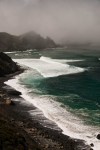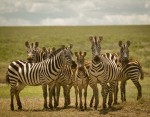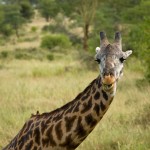Everybody loves a beautiful sunset. They come in all colors, from deep red to purple to pink. Here are a few from my travels.

Costa Rica Red
Costa Rica, 2008, from atop a hill. The sun is setting over the Pacific, although you can’t see the water from here. We had been photographing birds; it was too foggy for good pictures. Then, as the sun got ready to set, we drove up the road and got this spectacular view.

Saguaro in Rose
The desert can be a beautiful place for sunsets. Much of the color is produced because of dust in the air. The particles reflect colors to make for some interesting sunsets. A saguaro against a colorful sky is an iconic view of the desert.

Ocean Colors
Then there is the ocean sunset, which is probably one of the most seen in photographs. It is also one of the most varied in color and drama. Stormy skies, big waves crashing on rocks, reflections on the sand – these are all elements that make the ocean sunset magical.

Lone Rock Aglow
Water and clouds always add an atmospheric element; they create a calm, exciting, stormy and/or peaceful mood. This sunset is inland, but it is opposite the setting sun instead of into the sun. Often you can see beautiful color “behind the sunset” which can be as lovely or even better than the sunset itself.
Don’t forget to turn around!


































